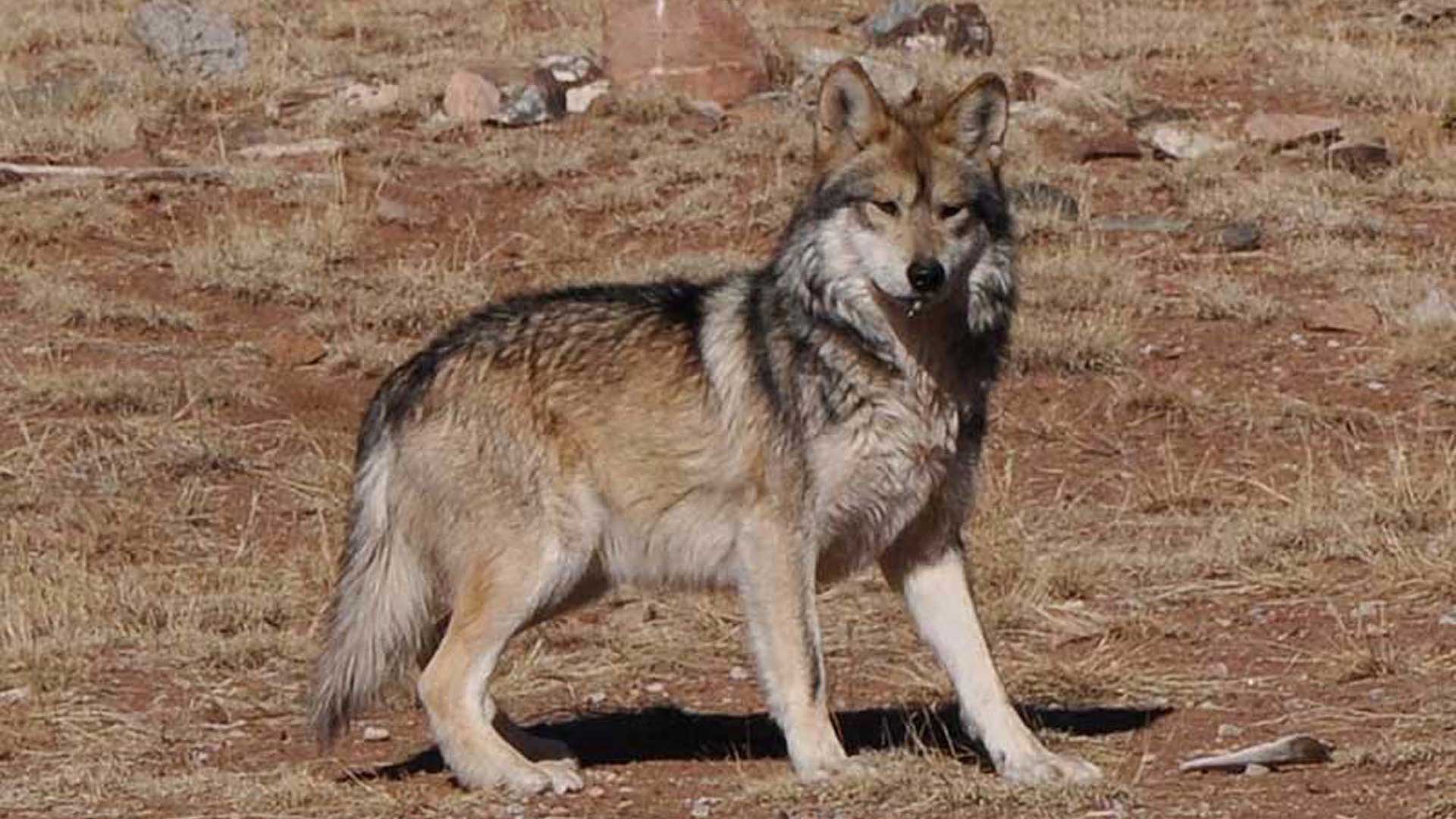 A Mexican gray wolf at the Sevilleta Wolf Management Facility in New Mexico in 2011.
A Mexican gray wolf at the Sevilleta Wolf Management Facility in New Mexico in 2011.
A federally protected female Mexican wolf was found dead in an area near the northern Arizona city of Flagstaff, alarming environmentalists who worry someone may have deliberately killed the animal.
The U.S. Fish and Wildlife Service and Arizona Game and Fish Department announced in a joint statement Friday that the animal known to biologists as Mexican wolf F2979 was found dead on Nov. 7. It was located outside the boundaries established along the Arizona-New Mexico border for managing the rarest subspecies of gray wolf in North America.
Officials did not release the cause of death except to say that it was "not related to agency management actions.” Up to $103,500 in reward money from state and federal agencies, as well as non-governmental organizations and private individuals, had been pledged for information “that leads to successful prosecution in the case,” they said.
If someone deliberately killed the wolf, “the full weight of the federal and state law should be brought to bear” against anyone responsible, Cyndi Tuell, Arizona and New Mexico director of the Western Watersheds Project, said in a statement.
Mexican gray wolves are protected under the Endangered Species Act. Killing a Mexican wolf can result in criminal penalties of up to $50,000, and/or up to one year in jail, seizure of firearms, vehicles, and buildings involved in the crime, along with a potential civil penalty of up to $25,000.
The state and federal agencies said in the joint release that the female wolf was first documented outside the government-designated “Mexican Wolf Experimental Population Area,” located north of Interstate 40 near Flagstaff in the early summer of 2024.
The animal was captured, fitted with a GPS collar, and released back into the wild in July. DNA analysis revealed the female had left its pack, known as the Tu Dil Hil pack, in the designated population area and was traveling on its own with another wolf.
Efforts to capture the pair and bring them back to the area had been underway. The other wolf's whereabouts are unknown.
Federal regulations require the Fish and Wildlife Service to remove all Mexican wolves found roaming north of Interstate 40, even in cases in which the animal is causing no inconvenience or loss. Ranchers in New Mexico and Arizona, who have long complained that wolves are responsible for dozens of livestock deaths every year, are concerned about any expansion of the animals' range.
Mexican gray wolves were first reintroduced into the Southwestern U.S. a quarter century ago. After a slow start, their numbers have grown in recent years to more than 250 in Arizona and New Mexico.

By submitting your comments, you hereby give AZPM the right to post your comments and potentially use them in any other form of media operated by this institution.